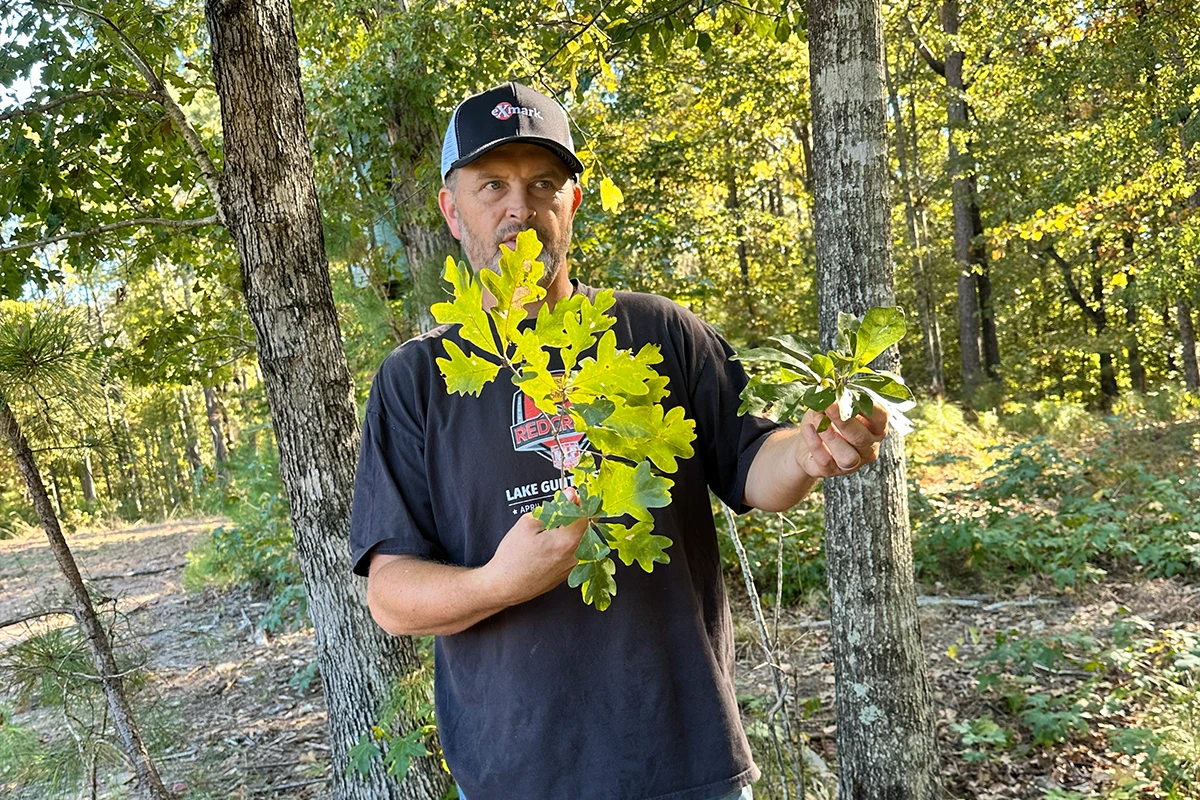In South Georgia, deer season is in full swing and that means the Bone Collector, Michael Waddell, is hot on the trail of his next whitetail. However, knowing how to craft the perfect food plot or dialing in your bow and arrow setup only goes so far—learning the woods is every bit as important. As Waddell puts it, “everything needs trees,” the ability to fill your next tag is no different. In fact, knowing your trees means knowing where the deer are feeding. So follow along in this Backyard Life video as Waddell takes a walk through the woods on his property, talking about the trees that matter most, and how understanding them can make you both a better hunter and steward of your land.
Reading the Woods
As the leaves start changing color, Michael shifts his focus from mowing with his Exmark Lazer Z to mapping out natural food sources. Deer are pattern-driven, and the more you can recognize the trees that attract them, the better shot you have at setting up in the right spot. That means knowing which trees are dropping the best-tasting acorns, making it easier to find scrapes (and your next buck).
Knowing What You’re Looking At

Waddell’s quick to say he’s no tree expert. He only knows what was passed down to him and from hands-on experience. But that knowledge pays off in the field, and he points out the key tree differences that matter.
- Hickory Tree: True to its name, hickory trees drop hickory nuts, which mainly attract squirrels and not much else.
- Mountain Oak: These trees boast big, broad leaves and produce huge acorns that deer eat, but don’t seem to enjoy quite as much as acorns from other trees on this list.
- Post Oak: Michael says they’re between a white oak and a red oak in looks (grayish-brown bark that doesn’t flake). And, they produce an egg-shaped, dark brown acorn that deer can’t get enough of.
- White Oak: These are the “grandaddy” of trees, Waddell says. They have round-lobed leaves, light gray (almost white) bark, and the knobby-topped acorns are sweeter than any other. Meaning deer hit them first every year.
- Red Oak: Acorns from red oaks have a lot of husk on them, to go along with the scaly cap, and make for some good eating for deer. In contrast to white oaks, their bark is typically a dark reddish-gray-brown, and their leaves have sharper edges.
- Water Oak: Waddell also calls these “Pin Oaks,” identified by their leaves which are narrow at the base and broad at the tip. They produce small acorns that he jokingly refers to as “Rice Krispie Treats” for deer—and they’re usually the first to drop.
Understanding Your Land
While knowing the trees on his land might help Waddell track deer and fill tags, it also serves a deeper purpose. It helps him understand the woods and ecosystem as a whole. The right mix of oaks, hickories, pines, and fruiting trees supports not just the deer population, it helps provide food and cover for other types of wildlife, alongside firewood and building materials. By paying attention to what’s dropping, where it’s falling, and how wildlife interacts with it, you’re setting yourself up for smarter hunts and a healthier land around you.


